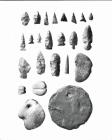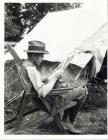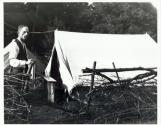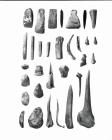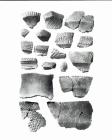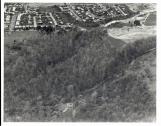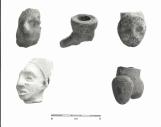1
No single individual can be credited with "discovering" the Lawson site. However, it is apparent that several people were aware of the site's existence in the mid to late 19th century. In 1864, Londoner William Saunders formed the London branch of the Entomological Society. While this society was dedicated to entomology (the study of bugs and insects), its members had interests in natural history, history and prehistory. Dr. Solon Woolverton was a member of the Entomological Society of Ontario, and held such interests in history and natural history. He visited the Lawson site and other Neutral sites in southwestern Ontario, collecting numerous artifacts.Woolverton brought the Lawson site to the attention of David Boyle, Ontario's first professional archaeologist, working for the Provincial Museum (now the Royal Ontario Museum). Boyle visited the site in 1864, and published the first archaeological report and sketch map of the Lawson site. Boyle's successor Roland B. Orr visited the site with Woolverton in 1917. Orr was impressed by the size of the Lawson site, and proposed that it "was more likely to be the principal fortified village than any of the others, and possibly the seat of the chief council of the Attiwandaron nation". Furthermore, Orr believed that Lawson was the site that Fathers Sansom and Du Creux visited and reported on in 1650 and 1660. However, subsequent investigations would indicate that the Lawson site was occupied over a century earlier (around AD 1500), prior to contact with Europeans.
6
The first extensive excavations on the site were conducted by Wintemberg during the summers of 1921, 1922 and 1923. The results of his investigations were published in 1939 (Wintemberg 1939). Wintemberg reported 28 refuse deposits (middens) ranging 3-4 ft. in diameter (one being 80 ft. in circumference), 120 pit features ranging 3-4 ft. in diameter, and 11 "fireplaces" (hearths). He excavated several of these features, and uncovered and mapped the floor plan of a longhouse. In total, Wintemberg collected approximately 43,000 artifacts, including 14,000 ceramic sherds, 11,000 animal bone fragments (primarily deer), and numerous implements made from chert and other stones, clay and bone.Wilfred W. Jury met Wintemberg at the Lawson site in 1921, and continued to conduct small-scale excavations in the years to follow. During this time, Jury also conducted archaeological fieldschools on the site for students of the University of Western Ontario under the Museum of Indian Archaeology (which later became the London Museum of Archaeology, and is now the Museum of Ontario Archaeology).
12
Points, netsinkers and pendants from early Wintemberg excavations1920s
Lawson Site, London Ontario
